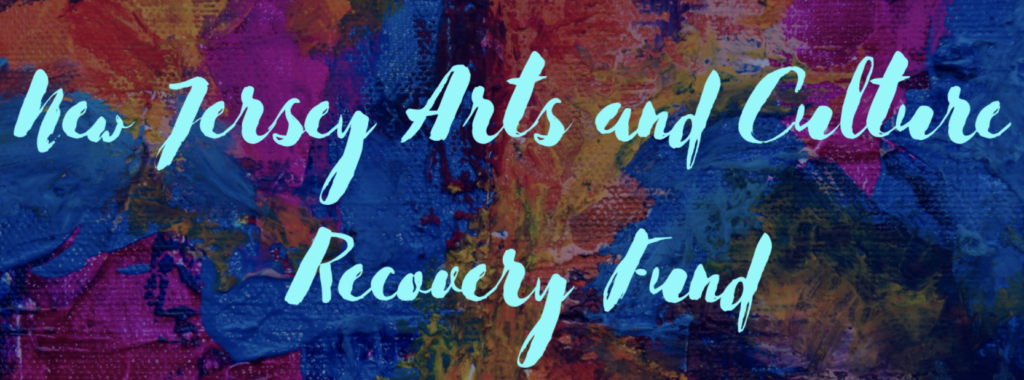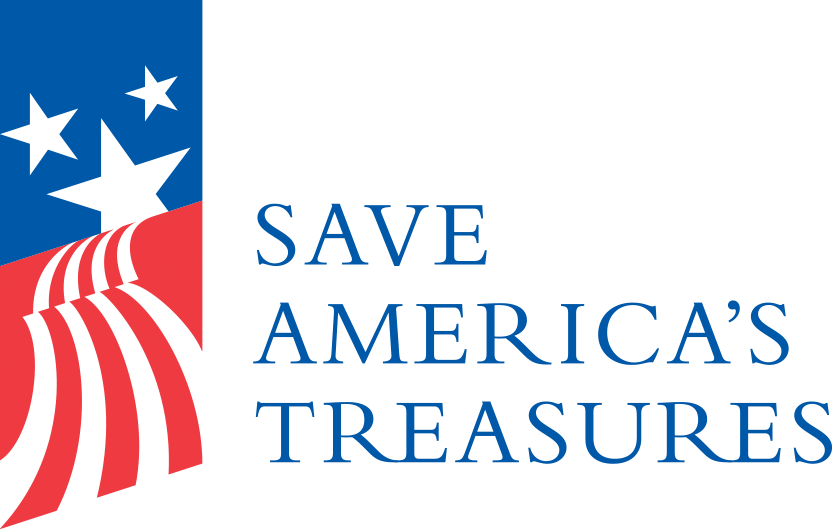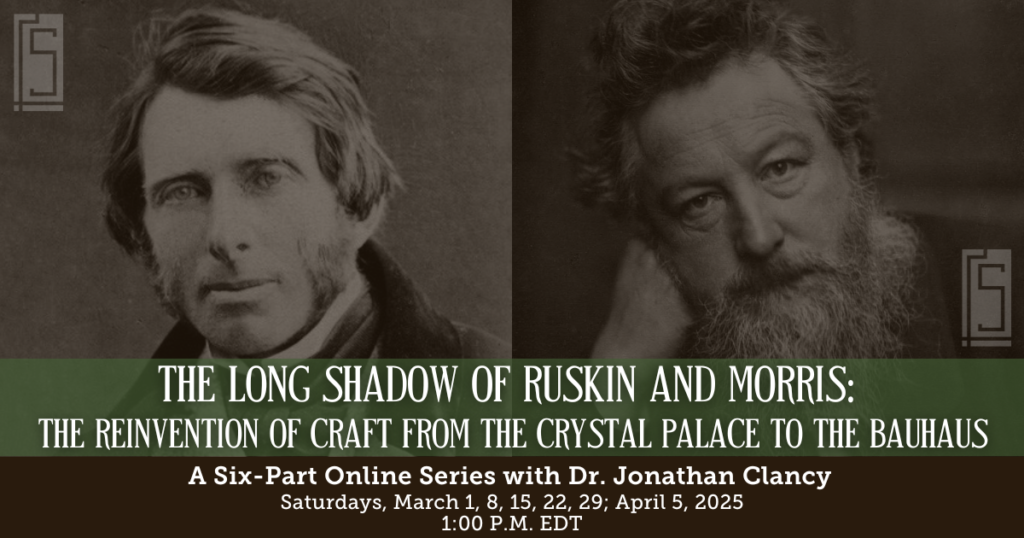
COURSE DESCRIPTION:
All too often we think of the Arts and Crafts movement as a relatively isolated phenomenon of well-meaning idealists whose rejection of modernity led them back to a fictitious past they were ultimately incapable of re-creating. As a result, we miss the much larger impact the movement had on the rehabilitation and promotion of craft in the late nineteenth and early twentieth centuries. For while we can easily recognize and embrace the importance of Ruskin and Morris to the Arts and Crafts movement, we tend not to understand how essential they were to the development of Art Nouveau, Secessionist design, and modernism throughout Europe and the United States. Despite distinctive national styles we will identify an underlying Englishness that permeated the period through Van de Velde in Belgium to Bing in Paris to Ernest Ludwig, Grand Duke of Hesse in Germany, and Jan Veth in Holland amongst others. These are the long shadows that Ruskin and Morris cast over craft that shaped its rehabilitation in the Western world.
Comprised of six sessions, this series argues that to restrict the Arts and Crafts movement exclusively to aesthetic boundaries is to ultimately rob it of its transformational power. As a result, we will consider how Morris’s and Ruskin’s example became the vehicle for creating a number of different styles and how–even as designers advanced towards new visual languages–they became models for thinking about craft’s place in the modern world.
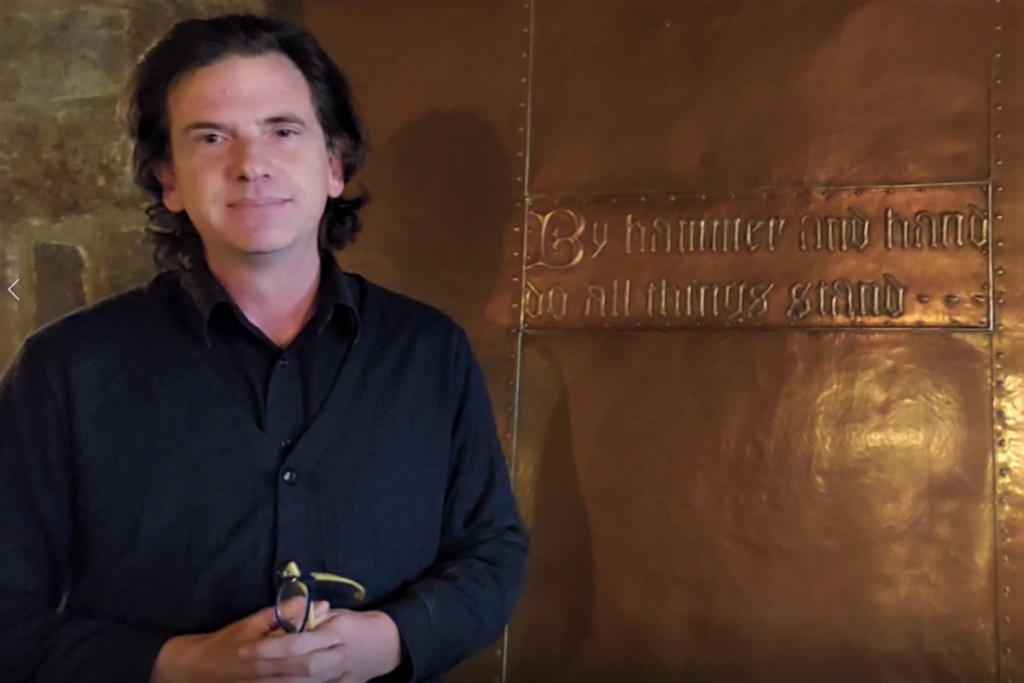
ABOUT THE INSTRUCTOR
Dr. Jonathan Clancy has been the Director of Collections and Preservation at the Stickley Museum at Craftsman Farms since 2020. Those interested in the Arts and Crafts field will know his publications including: The First Metal—Arts & Crafts Copper, These Humbler Metals: Arts and Crafts Metalwork from the Two Red Roses Foundation Collection, Beauty in Common Things: American Arts and Crafts Pottery from the Two Red Roses Foundation as well as articles for The Journal of Modern Craft, Style 1900 and Journal of Design History. Other contributions include chapters and articles on topics ranging from Studio pottery after World War II, American trompe l’oeil paintings of money, and John Singleton Copley’s Watson and the Shark. He is currently co-authoring a catalog on European ceramics for the St. Louis Art Museum and contributing to a planned exhibition on French ceramist Taxile Doat. His article on the ceramic collection of Gustav Stickley for the journal Ceramics in America will appear later this year.
Registration is required. Once registered and paid, you will receive an email prior to each session with a link to join.
Do you have a scheduling conflict for the live session? You can still enjoy the program. Register and we’ll send you the recording! All paid attendees will be emailed a private link to the session recording when it is available, typically 4-5 days after the live program.
Missed us? You can also register retroactively. If you register for a session that has passed, you’ll receive access to the recording when it is ready.
Haven’t tried a session yet? Each session is planned as a “stand-alone” lecture, so you can take them all or attend the topics that interest you most.
6 Sessions for $25/ Session
Member Price! All 6 Sessions for $120 (20% off!)
| 1 | Sat., March 1, 2025 at 1:00 P.M. EST | Session 1: Ruskin’s England and the Call to Arms In hindsight, London’s Crystal Palace Exposition of 1851 laid bare both the potentials and pitfalls of modern industrial production across Europe and became the spark that would eventually ignite a broad rehabilitation of craft practices. Neither Ruskin or Morris “invented” the idea that craft was suffering, but they were the right men at the right time to become inextricably linked to its renewal. Within a year, the precursor to the Victoria and Albert Museum had been formed and the South Kensington system of education had been started. The founding of Morris, Marshall, Faulkner & Co. in 1861 and their success at the following year’s London International Exhibition of Industry and Art laid the foundation for a renovation of craft practices in continental Europe and the United States. Often discussed today as a singular style–though the term “Arts and Crafts” was not coined until 1888–it is less significant for its aesthetic contributions than the impetus it gave to makers, retailers, and consumers throughout the Western world. |  Seddon & Sons (cabinet) and Morris, Marshall, Faulkner & Co. (decoration), King Reneé’s Honeymoon Cabinet, 1861. Victoria and Albert Museum. |
| 2 | Sat., March 8, 2025 at 1:00 P.M. EST | Session 2: Rivalry and Reform: The British Are Coming Reaction to the founding of the Victoria and Albert was profound, and nations across Europe founded museums of industrial arts following the English model. Many too, invested in education so that their industries (they hoped) would compete with the British. Beginning in the 1860s and culminating at the turn of the century, there was an almost urgent adoption of the English model that spanned from Budapest to Vienna to Amsterdam to Hamburg and all points in between. Ironically, it was not an Englishman but the Belgian Henry Van de Velde who was transformational in spreading the gospel of Ruskin and Morris throughout the continent. Active in Paris, Belgium, Holland, and Germany where his various roles as architect, designer, educator, and author allowed him to reach different audiences with authority, Van de Velde emerges as one of the period’s principal reformers who transcended the restrictive notions of nationalism and style. An ardent admirer of what he saw as Morris’s and Ruskin’s mission–and notably less so of their aesthetic–Van de Velde’s commitment to principals and ability to speak to makers, retailers, students, and reformers make him a principal figure of craft reform who remains underappreciated today. |  Josef Maria Olbrich, bottle holder, ca. 1900. Christie’s. |
| 3 | Sat., March 15, 2025 at 1:00 P.M. EDT | Session 3: The French Connection: Reform in the Third Republic In France, which became the center for decorative arts and the “new spirit of innovation” by the turn of twentieth century, an equivalent to the Victoria and Albert Museum was late to materialize. So too were the type of government sponsored educational reforms that prospered throughout the continent. How then, between the 1851 Crystal Palace Exposition and the 1900 Exposition Universelle did France eclipse all other nations to become the leaders in this new movement of craft and rehabilitation? This session explores the country’s numerous expositions as kind of de facto museums that continuously shaped artistic culture, groups like the Union Centrale des Arts Decoratifs which published a magazine and hosted exhibitions, as well as key players–like Siegfried Bing, Henry Van de Velde and others–who drew upon the lessons of the English craft reform to spur innovation. | 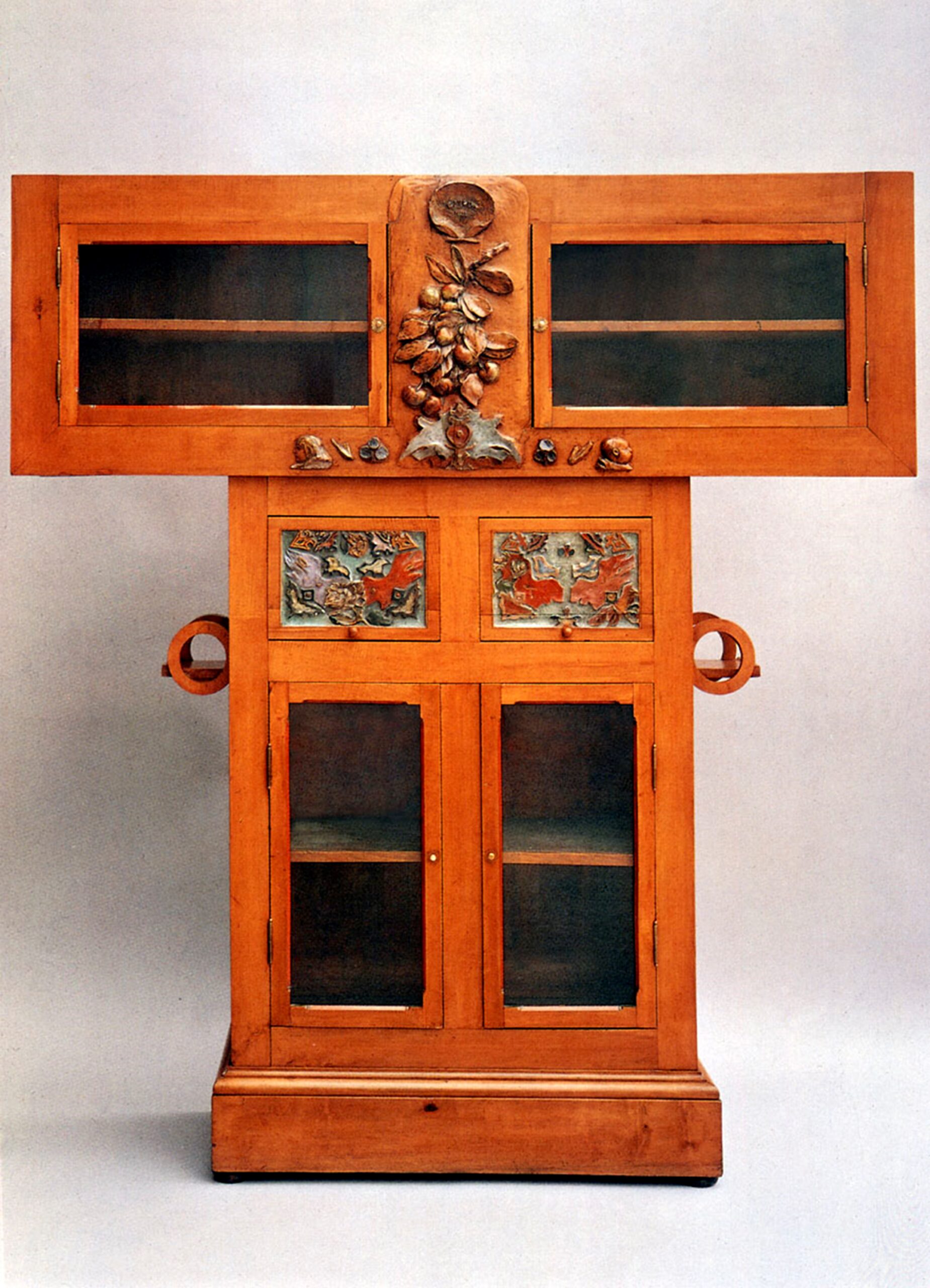 Paul Gaugin, Display Cabinet, 1881. Museum Kunst und Gewerbe, Hamburg. |
| 4 | Sat., March 22, 2025 at 1:00 P.M. EDT | Session 4: The Periphery as Center: Scandinavian Design Reform In his debut novel Piano Player of 1952, Kurt Vonnegut’s character Ed Finnerty makes an impassioned plea for the importance of the periphery, that could easily describe Scandinavian design of the late 19th century. “Out on the edge you see all kinds of things you can’t see from the center,” he tells Paul Proteus. “Big, undreamed of things–the people on the edge see them first.” More than simply an outpost of Europe caught in the long shadow of Ruskin and Morris, Scandinavia was central to debates about style, history, the rehabilitation of craft, and the role that industry could play in helping to shape the new aesthetics. Museum culture flourished too, from Stockholm to Copenhagen and Trondheim, all of which were actively building important collections by the turn of the twentieth century. This session illuminates how Scandinavian design helped transform arts and industries throughout continental Europe and the United States by re-centering its position in design history. |  Valentin Kielland, cabinet (skap), 1902. Nasjonalmuseet, Oslo. |
| 5 | Sat., March 29, 2025 at 1:00 P.M. EDT | Session 5: Transatlantic Dreams of Reform: Craft in North America Looking back on the development of the Arts and Crafts movement in 1914, ceramist Louise McLaughlin identified the 1870s as the start of the movement in the United States, noting: “Tidings of the veritable renaissance in England under the leadership of William Morris and his associates had reached this country. It was the beginning of the Arts and Crafts movement…” While history has a tendency to conflate the Arts and Crafts movement with Craftsman or Mission style in the U. S., this broader period is markedly more diverse. Elements of Japonism, historicism, and contemporary European designs continued to influence makers many of whom felt the shadow of Morris less in terms of style than as a call to resurrect craft and industry. This session aims to dismiss the notion of American exceptionalism in the movement and frame it instead in the broader context of the varied reactions to Morris and Ruskin that were transforming modern design throughout the Transatlantic world. |  Karl von Rydingsvard, lectern, ca. 1900. Toomey & Co. |
| 6 | Sat., April 5, 2025 at 1:00 P.M. EDT | Session 6: The Bauhaus and the Making of Modern Craft Practitioners of Art Nouveau, Jugendstil, Stile Floreale, and the regional variations inspired by this new spirit of craft revival quickly abandoned the florid lines and voluptuous eroticism that seemed to mark everything at the dawn of the new century. Yet, they could not–or dared not–escape the shadow of Ruskin and Morris and the spirit of craft reform. Here too, we witness Van de Velde’s influence, first as Artistic Advisor to manufacturers for William Ernest, Grand Duke of Saxe-Weimar-Eisenach where he founded an applied arts seminar in 1902 that became–in 1908–the Grand Ducal Saxon School of Applied Arts. In 1907 he was a founding member of the Deutscher Werkbund, a state-sponsored initiative to improve the competitiveness of Germany’s manufactures. As Director of the Kunstgewerbschule he trained a generation of designers before he was dismissed for his nationality as World War I. Amongst his final and most significant achievements was recommending his successor–Walter Gropius–who in 1919 merged the school with the Grand Saxon Academy of Fine Arts to found the Bauhaus. |  Walter Gropius and Adolf Meyer, Sommerfeld House, ca. 1920. Bauhaus-Archiv Berlin. |
6 Sessions for $25/ Session
Member Price! All 6 Sessions for $120 (20% off!)
MORE INFORMATION
Craftsman Farms, the former home of noted designer Gustav Stickley, is owned by the Township of Parsippany-Troy Hills and is operated by The Stickley Museum at Craftsman Farms, Inc., (“SMCF”) (formerly known as The Craftsman Farms Foundation, Inc.). SMCF is a 501(c)(3) not-for-profit organization incorporated in the State of New Jersey. Restoration of the National Historic Landmark, Craftsman Farms, is made possible, in part, by a Save America’s Treasures Grant administered by the National Parks Service, Department of the Interior, and by support from the Morris County Historic Preservation Trust, The New Jersey Historic Trust, and individual donors. SMCF received an operating support grant from the New Jersey Historical Commission, a division of the Department of State and a grant from the New Jersey Arts & Culture Recovery Fund of the Princeton Area Community Foundation. Educational programs are funded, in part, by grants from the Arts & Crafts Research Fund.



